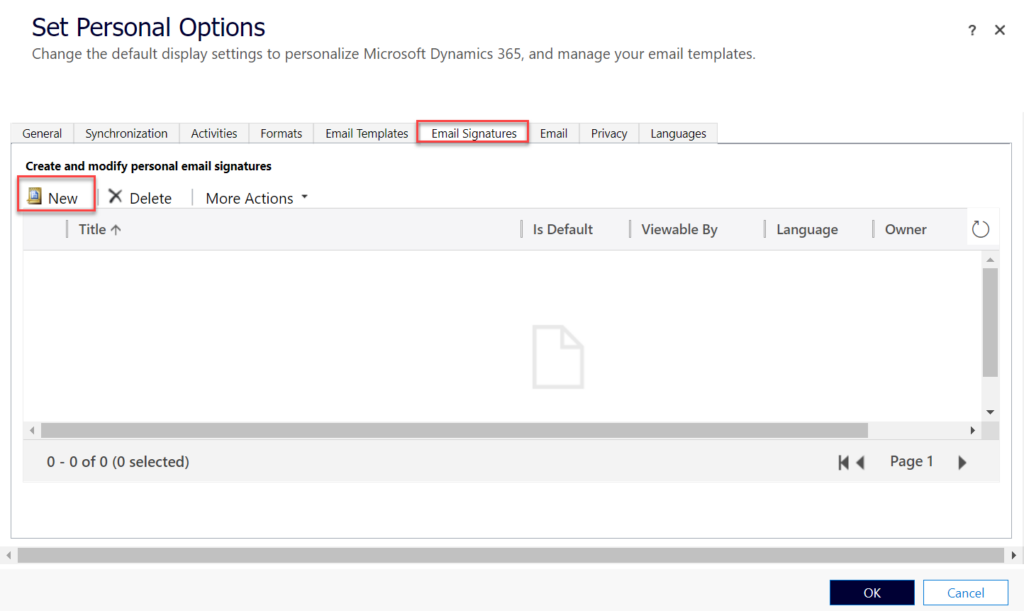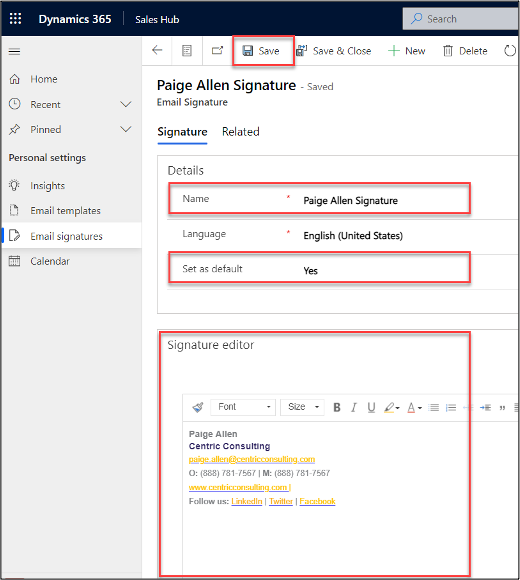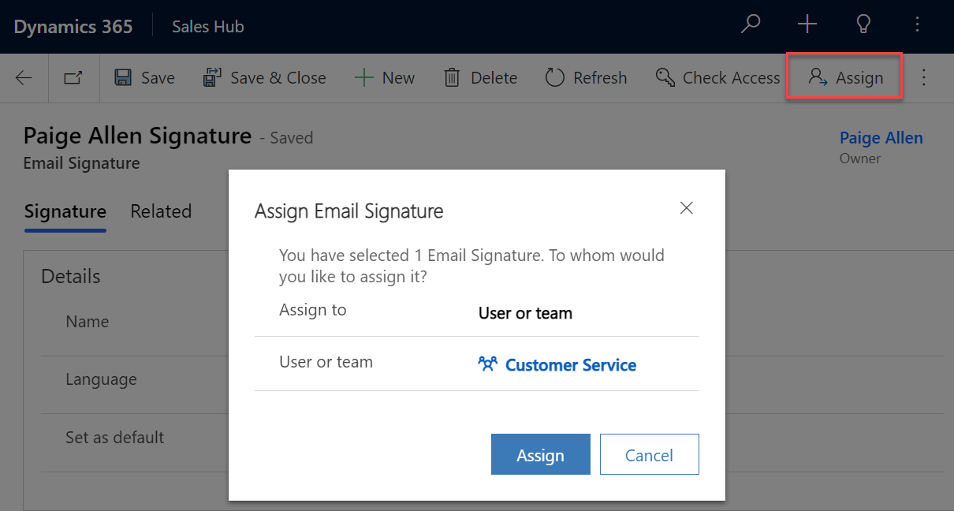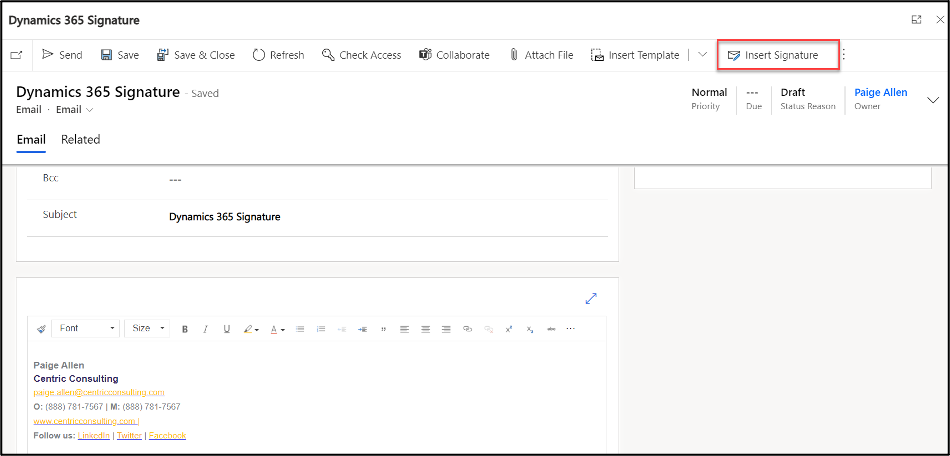Enhance your email signature in Dynamics 365 Customer Engagement. We walk through how to add one in this blog.
Business users and automated processes commonly send emails to Leads, Contacts and Employees directly from the Microsoft Dynamics 365 system, but often, these emails are missing a branded company signature.
Branding emails in Dynamics 365 CE provides a consistent and professional experience for the recipient. This guide will show you how to set up an email signature in a few steps. We’ll walk through how to:
- Access your Dynamics personal settings.
- Create a personalized signature.
- Assign the signature to a coworker or team.
- Use the signature within Dynamics CE.
Let’s look at each step.
Step 1: Access your Dynamics Personal Settings
Select the settings gear in the navigation bar and select Personalization Settings.
Here you can personalize your display settings and CRM workspace to meet your preferences and requirements.
Select Email Signatures – New. A new window will open.
Step 2: Create a Personalized Email Signature
To create your personalized email signature, you will need to update the following fields:
Name: Give your signature a name. The name of the signature should clearly state who or what team will use the signature. You can own multiple signatures in Dynamics 365, and you can create signatures for other users or teams to use, for example, you can create a Customer Service signature.
Language: The language will default to your specified language. You will be able to select a preferred language if your system has multiple language packages installed.
Set as Default: If you want the signature to automatically default on your emails, select Yes.
Depending on the emails you commonly send from Dynamics, you may want to set either your personal signature or a general department email as your default.
Save the record.
If you ever receive a permissions error message during this process, contact your system administrator.
In the Signature Editor, copy and paste or type in the signature you want to add.
Step 3: Assign the Signature to a Coworker or a Team
If the signature is not for you, you will want to assign the signature to the desired owner or team. For example, if you created the email signature for your Customer Service team, you will want to assign the email to the Customer Support team so they can use the signature.
To assign the email signature:
- Select Assign in the command bar.
- Assign the signature to the desired user or team.
The owner of the email signature record will update to the individual or team you assigned.
Step 4: Use the signature within Dynamics 365 CE
Create a new email within Dynamics. If you have a default email signature, it will automatically appear in the body of your email.
If you do not have a default email signature or if you want to use a different signature than your default, select Insert Signature in the command bar and select an available signature. It will automatically replace your default signature with the newly selected signature.
We strongly advised you to test how the email signature renders prior to sending an email to your contacts. To test, create an email and send it to yourself.
For System Administrators
If you are a system administrator, there are a few other points to consider about email signatures in Dynamics. Here is another way to create email signatures in Dynamics 365 Customer Engagement.
You can now manage the system’s email signatures within the Power Platform Admin Center. Navigate to your environment settings, select Templates, select Email Signature. A new window will open for you to manage the email signatures.
Email Signature Security
You can manage user permissions to the Email Signature table with security roles. Open the security role you want to modify and search for the Email Signature table on the Core Record tab.
You will be able to configure the role to allow the users assigned the security role to create, read, write, delete and assign email signatures on either a User, Business Unit, Parent: Child Business Units or Organization level.
For example, you may want the users assigned the Salesperson security role to edit and delete email signatures that they own, but they can view every email signature in the organization, regardless of ownership.
Conclusion
Email signatures enable a more personalized experience and creating one is a task every user should be able to perform in Dynamics 365 Customer Engagement








